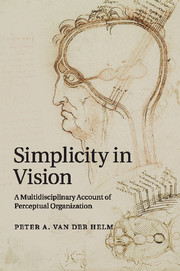Book contents
- Frontmatter
- Dedication
- Brief contents
- Extended contents
- Figures
- Tables
- Boxes
- Credits
- Preface
- Prologue Levels of vision, description, and evaluation
- Part I The theoretical cycle
- Part II The empirical cycle
- Part III The tractability cycle
- Chapter 5 Transparallel processing
- Chapter 6 Cognition by synchronization
- Epilogue Towards a Gestalt of perceptual organization
- References
- Author index
- Subject index
Chapter 5 - Transparallel processing
from Part III - The tractability cycle
Published online by Cambridge University Press: 05 January 2014
- Frontmatter
- Dedication
- Brief contents
- Extended contents
- Figures
- Tables
- Boxes
- Credits
- Preface
- Prologue Levels of vision, description, and evaluation
- Part I The theoretical cycle
- Part II The empirical cycle
- Part III The tractability cycle
- Chapter 5 Transparallel processing
- Chapter 6 Cognition by synchronization
- Epilogue Towards a Gestalt of perceptual organization
- References
- Author index
- Subject index
Summary
In the 1960s, SIT began as a theory about the nature of the mental representations produced by the perceptual organization process, that is, as a theory at what Marr (1982/2010) called the computational level of description (see the Prologue). In this chapter, I discuss a formal process model, thereby including the algorithmic level of description.
As indicated in Chapter 1, the application of SIT's formal coding model in the empirical practice involves three steps. First, for a given proximal stimulus, candidate distal stimuli are represented by symbol strings; second, coding rules are employed to determine simplest codes for these strings; and third, the overall simplest code is taken to reflect the percept in terms of a hierarchical organization of a distal stimulus that fits the proximal stimulus. As also indicated in Chapter 1, the experimenter is expected to make psychologically plausible choices to perform the first step, but after that, strictly formal rules take over. That is, the second and third steps reflect SIT's ideas about the perceptual organization process, in that the actual process is assumed to rely on the same information-processing principles as those which SIT's formal coding model applies to strings.
In SIT's formal coding model, however, the selection of simplest codes of strings poses a computing problem that seems intractable by traditionally considered forms of processing. This has raised questions about the practical feasibility of the simplicity principle (cf. Hatfield & Epstein, 1985).
Information
- Type
- Chapter
- Information
- Simplicity in VisionA Multidisciplinary Account of Perceptual Organization, pp. 255 - 288Publisher: Cambridge University PressPrint publication year: 2014
